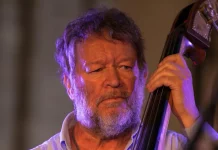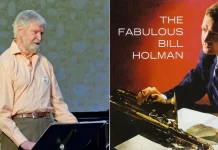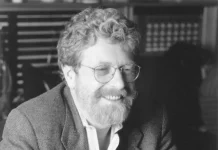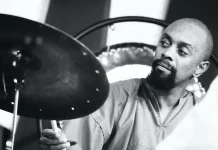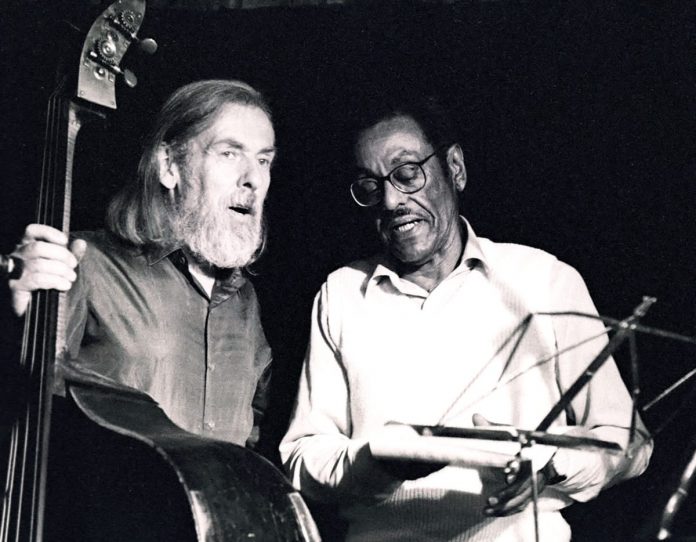
Bassist Peter Ind, who died 20 August this year, aged 93, had more strings to his bow than the average musician and pursued his various passions to the very end, despite health problems intervening in his later years. If you wanted a comment on music or various strands of the arts Peter would always be enthusiastically forthcoming.
He was one of the first British jazz musicians in the post-war period to take themselves off to New York, therefore acquiring a first-hand experience of what was then a mecca for beboppers and their followers. Other players who made the same journey included Ronnie Scott.
When he made that first journey in 1949, as a musician on the Queen Mary, he had only been a professional for a couple of years. Although he had been playing gigs since his mid-teens as a piano player, he switched to the bass between 1944 and 1946 when he went to evening classes at Trinity College of Music. Apparently, he doubted his abilities as a pianist and reverting to the bass proved to be a crucial move in his life.
As a consequence of his first trip to New York he met pianist Lennie Tristano with whom he started lessons. At that time the Queen Mary crossed the Atlantic every two weeks and so every fortnight the frequent traveller could be found disembarking from the liner to take up his tuition where it had left off.
His first gig with Tristano took place in 1950 at Birdland when the late arrival of the scheduled bass player gave him the chance to take the bandstand. A year later he took up residence in New York, which gave him the opportunity to study with Tristano on a permanent basis. For a further two years he absorbed the principles the pianist brought to the music, and then took them with him on a Lee Konitz tour in 1953. The saxophonist continued to use Peter’s services and he can be heard on the albums Lee Konitz At Harvard Square and Konitz.
In 1954, Peter appeared at the inaugural Newport Jazz Festival as part of a Tristano sextet. The July weekend bill included Billie Holiday, Dizzy Gillespie, Ella Fitzgerald, Oscar Peterson and Gerry Mulligan, all people the bass player had become used to rubbing shoulders with. The biographies tend to concentrate on Ind as Tristano disciple, but during the 50s his performing companions included Booker Little, Booker Ervin and Buddy Rich.
During that decade he also turned his hand to record production and sound engineering, a passion that stayed with him. One of the lesser-known facts of his career is the contribution he made to the early years of stereo recording and the art of overdubbing. He acquired his own recording equipment, set up in his New York loft, producing sessions for the likes of Gerry Mulligan and Zoot Sims. The spinoff from these efforts was being asked to engineer a number of dates for major jazz labels.
In 1961, Peter set up the Wave label, heralding a somewhat restless period in his life. He married his first wife Barbara in London before a return to New York which turned out to be a stepping-stone for a three-year stay in California. He started playing a number of solo bass concerts (a relatively brave choice for the time), recorded a number of albums in the same vein, and reunited with Lee Konitz as well as making a couple of Wave recordings with Warne Marsh. Over the years, Wave issued discs featuring musicians such as Ronnie Ball, Sheila Jordan, Dave Cliff and Martin Taylor.
The mid-60s found him and his family returning to England, where he mixed his time between playing and teaching. He published two books in later years, the first entitled Jazz Visions – The Legacy Of Lennie Tristano, the second – The Environment and Cosmic Metabolism, a look at the work of Wilhelm Reich – covering the world energy crisis. Peter was also a talented painter whose work found its way into the Royal Academy.
Although he continued playing regularly in the 70s and 80s, it took until 1984 for the jazz public to really take notice of the Ind surname again, when he announced the opening of a new club in a warehouse in the run-down Hoxton area of East London. It was called the Bass Clef and suitably was in the basement; later it was joined by the Tenor Clef, on an upper floor. The rooms featured jazz and other styles of music and became a must-visit for London fans. Among those who appeared were Duke Jordan, Benny Bailey, Kenny Barron, Bill Frisell, Paul Motian, Sheila Jordan and, on one memorable occasion, the Gerald Wilson Big Band.
The failure of the operation 10 years later due to financial pressures beyond Ind’s control still rankled with him many years after the event. His bitterness about the affair continued into old age, even if the opportunity to spend part of each year painting in France brought helped soften his disappointment. In 2015 the Parliamentary Jazz Awards found a place for him when he received an award for services to jazz. When he reached 90 the 606 Club in Chelsea ran a special night in his honour.
Aside from his musical accomplishments as bassist and engineer, Peter Ind will be remembered as an exceptionally enterprising and rugged individual in the world of British and international jazz.

